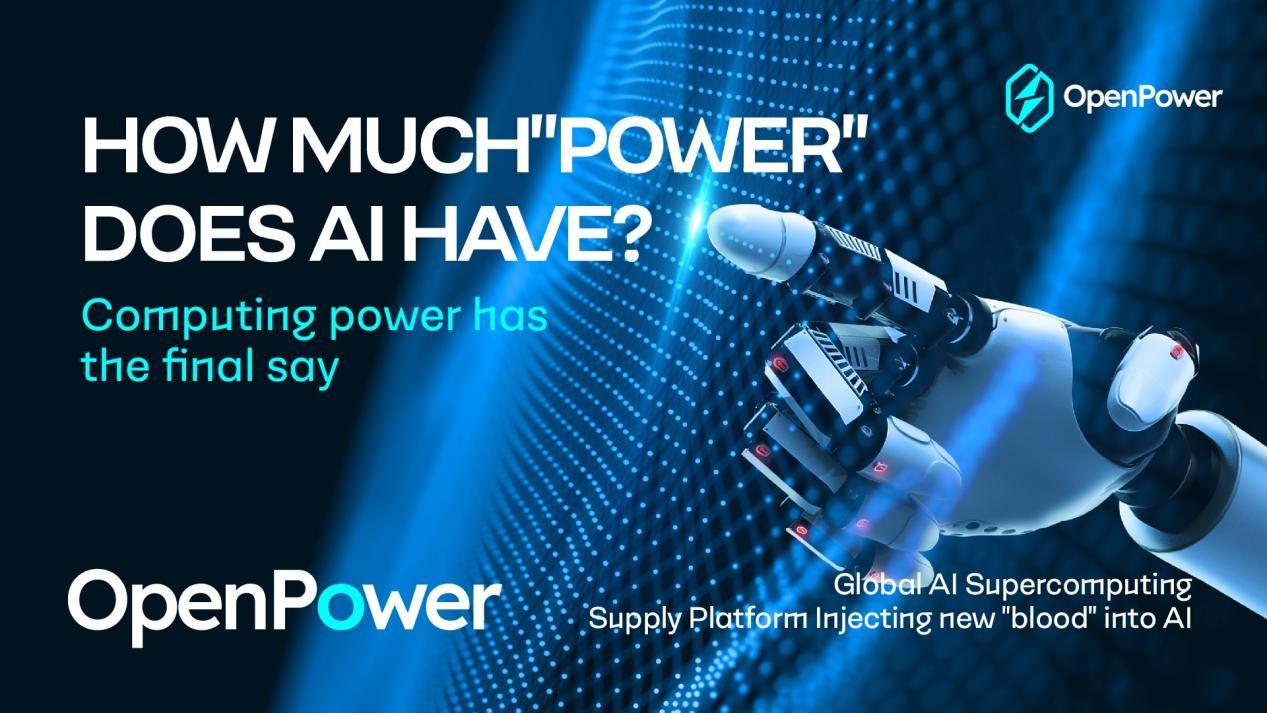In 2022, as the OpenPower project rapidly developed, the design and optimization of the platform interface became a focal point for the project team. Recognizing the importance of user experience, the OpenPower team dedicated itself to creating an intuitive, feature-rich platform interface that allows global computing power providers and users to easily access and utilize this distributed intelligent computing network.

From the early stages of the OpenPower platform's development, the importance of user experience was paramount, especially when dealing with a complex and technically detailed distributed intelligent computing network. As such, OpenPower took specific measures to ensure the platform was not only powerful but also user-friendly.
Initially, the OpenPower design team conducted comprehensive and in-depth market research, interviewing potential users from around the world, including data scientists, AI researchers, software engineers, and general tech enthusiasts. Through these conversations, OpenPower gathered a wealth of firsthand information on user expectations and needs.
Following this feedback, OpenPower began the design and iterative process for the platform's user interface (UI) and user experience (UX). A primary focus was on simplifying the operation process. For example, OpenPower designed a straightforward registration process that can be completed in just a few steps, significantly lowering the entry barrier for new users. Moreover, OpenPower optimized the display and transaction processes for computing resources, allowing users to easily post computing power needs, browse available resources, and execute transactions through graphical interfaces and intuitive operational guides.
OpenPower introduced a series of intelligent design elements, such as auto-fill and smart suggestion features, to further enhance user convenience. Additionally, to meet diverse user needs, OpenPower offered a wide range of personalization settings, allowing users to adjust the interface layout and functional modules according to their preferences.
Technologically, OpenPower leveraged the latest front-end development technologies and frameworks to ensure the platform was visually appealing and performed rapidly. Through continuous user testing and feedback loops, OpenPower steadily identified and resolved interface design issues, progressively improving the platform's user experience.

To ensure the platform's stability and security, OpenPower conducted a series of rigorous technical tests. These included load testing to assess the platform's performance under high concurrency conditions, security testing to identify and fix potential security vulnerabilities, and transaction efficiency testing to ensure the buying and selling process of computing resources was both quick and accurate. Through these tests, the team continuously improved the technical architecture and strengthened security measures, ultimately achieving a stable and secure computing power trading platform.
The OpenPower platform's computing power matching algorithm is one of the core technologies for building an efficient distributed intelligent computing network. To ensure computing resources precisely meet different user needs, OpenPower's technical team meticulously designed and implemented an advanced intelligent matching system. The system's design aimed to optimize the allocation of computing resources algorithmically, thus maximizing the network's computational efficiency and cost-effectiveness.
OpenPower's computing power matching algorithm utilized a multi-dimensional matching strategy, considering specific parameters of computing power needs, including computational capacity, memory size, storage requirements, network bandwidth, and expected task execution time. The system built detailed demand profiles based on these parameters, then matched them with available computing resources.
The computing power matching system was not static; it could adjust itself according to real-time computing power supply and demand conditions and market dynamics. OpenPower introduced machine learning algorithms, enabling the system to learn from each matching process and gradually improve the accuracy and efficiency of matches. For example, by analyzing historical data, the algorithm could predict computing power demand trends during specific time periods, allowing for pre-adjustment of resource allocation strategies.
User feedback was a crucial source for the continuous optimization of the computing power matching algorithm. OpenPower established an efficient feedback mechanism, encouraging users to provide valuable comments and suggestions during use. This feedback directly informed the technical team's optimization efforts, helping OpenPower better understand user needs and further refine and adjust the matching algorithm.
To ensure the high performance and reliability of the computing power matching algorithm, OpenPower implemented comprehensive performance monitoring and evaluation mechanisms. Through regular testing and analysis, the technical team could promptly identify and adjust potential issues, ensuring the algorithm's stable operation under various conditions.
The OpenPower team highly valued user feedback, considering it a critical basis for product optimization and feature iteration. The design team regularly collected and analyzed user feedback, rapidly adjusting and optimizing functions in response to users' issues and needs. This user-centered design philosophy ensured the platform could continuously improve, better serving global computing power providers and users.

After a year of relentless effort, the OpenPower platform made significant progress in user interface design, technical testing, and computing power matching algorithm optimization. This not only enhanced the user experience but also laid a solid foundation for the platform's stable operation and rapid development. Looking forward, OpenPower will continue to listen to user voices, innovate, and improve, striving to become the world's most popular distributed intelligent computing network platform.